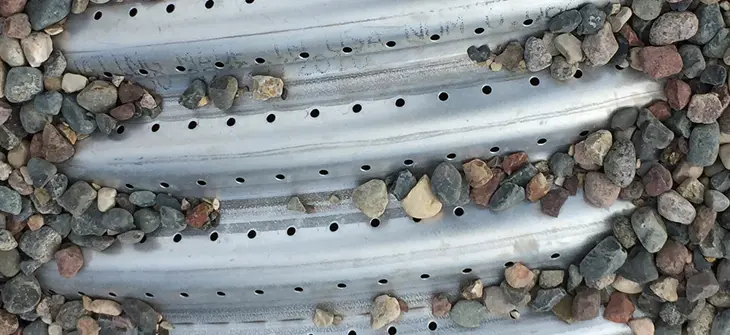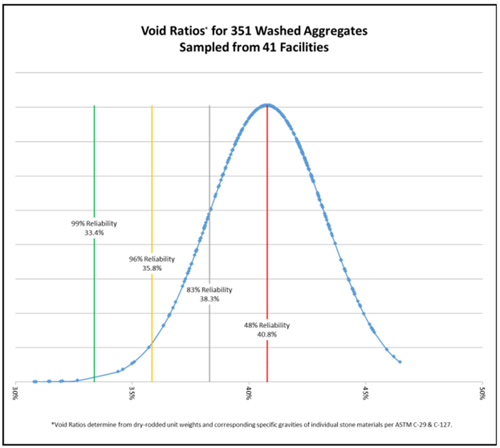
Examining Stone Void Space Part 1: Is 40% a Reliable Number?
Is 40% Void Space Accurate? What Engineers Should Know About Stone Storage
Stormwater detention systems often include a large portion of the storage volume within the voids of the backfill material. Depending on the underground structure design and size, allocated storage within the stone voids can vary between 25-60% of the overall storage for the project. The generally accepted number has been 40% stone void space. However, there have been few national studies to prove the 40% void space is reliable. Engineers need to ask if this number is indeed accurate, and if not, what is the implication on designs?
A recent study1 with 300+ washed aggregates from 41 facilities within the United States sought to address the 40% assumption. The findings were surprising:
- 40% void space is an average, not a given truth. It is an average communicated based on very few studies. In fact, it’s only about 60% reliable.
- The same aggregates were found to have variation throughout various geographies within the same quarry company.
- To obtain a 96% reliability in stone voids, 36% stone void storage should be considered in the design.

Compounding this issue is that stone void space will most often decline over time. One reason for this is that on-site erosion & insufficient sediment controls can lead to sediment buildup and can compromise a design before site stabilization even occurs. If you have ever been to a construction site, you know what I mean. Unfortunately, improper erosion and sediment controls at a construction site are not uncommon, and one month without proper erosion and sediment management during construction can do more damage than years of sediment accumulation from a paved surface, and can present a compounding downstream flooding risk each year with long term accumulation.
It’s important to remember that there is no going back when it comes to the occlusion of stone voids; once they are filled, the storage capacity is permanently lost. Therefore, the end goal for engineers should be to minimize the reliance on stone voids for storage, and by doing so, you maintain as much of the storage design as possible, reducing downstream concerns. How do you do that? We’ll address that in our next post.
1 Source: Cashatt, J.C. (2020), Viability of Stone Void Space in Underground Detention/Retention Systems, Proceedings of EWRI 2020, Henderson, NV, American Society of Civil Engineers.
